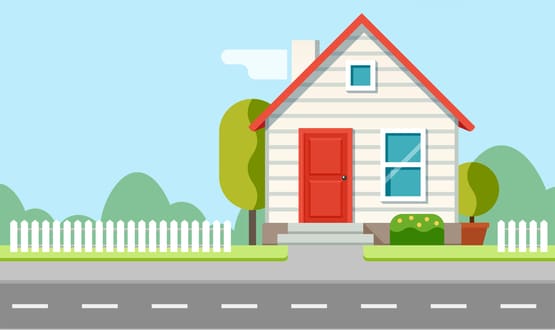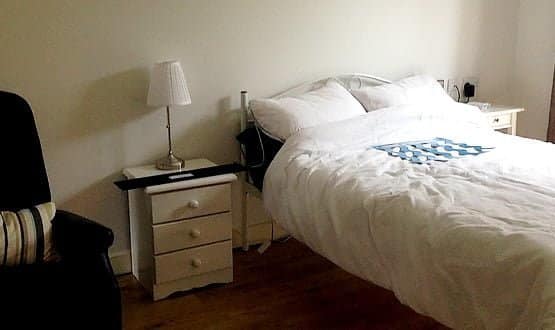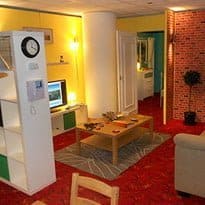Smart homes for ageing population could save NHS billions, report claims

The NHS could save “billions of pounds each year” by installing equipment in the homes of older people that allows them to remain mobile and independent, according to a new report.
Research from the Institution of Mechanical Engineers (iMechE) suggests that adapting homes to suit the needs older people could prevent the onset of frailty, reducing the risk of hospital visits as a result.
It argues that ‘smart’ technologies like remote monitoring systems, sensors and mobile devices could all contribute to helping older people remain safe in the home, while giving them increased independence.
The report, called Healthy Homes: Accommodating an Ageing Population, claims that physical inactivity costs the NHS £10bn a year, with £2.5bn spent on care as a result of poor housing.
It estimates that allowing vulnerable people to remain in hazardous homes is costs the NHS some £414 million per year in treatment costs alone.
Adaptations made to “assistive” furniture to encourage more physical activity, is one of the solutions put forward by iMechE. For example, instead of a chair that moves a person from a sitting to a standing position with the press of a button, the chair could use just enough force so that the person is encouraged to use their knee muscles to stand.
It also argues that installing more outside lightning, handrails and slip-resistant surfaces in the home could reduce the risk of falls, a primary cause of hospital admissions among the over-65s. The report references a study conducted in New Zealand, which concluded that basic modifications such as these resulted in a 39% reduction in injuries among older people, and thus a 26% drop in the need for medical treatment.
On a more fundamental level, the location and height of home appliances could also be modified to make them more accessible to older people, the report notes. For example, placing appliances, cupboards and plug sockets at eye-level would reduce the need to stoop. Adaptations of this type could be retro-fitted into the home at fairly little cost.
Dr Helen Meese, lead author of the report and member of the Institution of Mechanical Engineers, said: “About seven million UK homes are headed by someone aged over 65 years, who will undoubtedly need some form of assistive technology to help with everyday living, within the coming decade.
“Homes built with older people in mind, as well as retrofit technology for our existing housing stock, could not only allow people to live in their homes for longer, but also massively reduce costs for the NHS and social care system.”
A missed opportunity?
The report highlights an opportunity for construction firms and device manufacturers to cash in on this relatively untapped market.
“Contrary to popular belief, our growing ageing population is becoming more tech savvy and this will only increase in the decades to come,” said Meese.
“The ‘Grey Pound’ accounts for over 50% of consumer spending in the UK, which reached £72bn in 2017.
“Yet demand for smart equipment and devices for older people has so far been slow, as many are poorly designed and aesthetically unappealing. Instead of creating products only for older people, manufacturers should focus on creating products that are flexible and span the generations.”
As means of encouraging this, Meese suggested manufacturers and construction firms be required to include older people – such as retired engineers and designers – in product design schemes and national infrastructure projects.
The report concludes by calling on the Government to introduce financial incentives for construction companies to build smart homes, as well as a re-assessment of the Department of Health’s Personalised Health and Care 2020 framework to include a ‘healthy living for life’ technology initiative.
East Lancashire Hospitals NHS Trust recently began using wearable technology designed to prevent falls in older people.
Speaking to Digital Health News, Janet Morrison, chief executive of Independent Age, said it was essential that housing and planning policy met the care and support needs of the ageing population “both now and in the future.”
She added: “Housing that meets our changing needs as we age is essential if we are to ensure older people are able to live independently in their own homes for as long as possible.
“Building technology and innovation into the design of homes must be done in a way that meets the day-to-day needs of older people, for example by supporting care services at home, which can help reduce the number of people experiencing delays in being discharged from hospital.




4 Comments
As an occupational therapist by background I am always amazed how little has been done so far, really pleased to read this article. I have been party to thousands of pounds worth of adaptations to housing to enable elderly or disabled people to live in their own homes when with some thought on basic changes to building design ( wider doors, accessible ground floor toilets and electric points at a higher level ) would save money in the long term. Remember that those who are coming out of hospital can often have to wait in care setting until those adaptations are place and this is an additional often hidden cost. There is also so much assistive technology out there but funding it is often an issue as budgets in health and social care are squeezed, personal budgets can be a way forward but we need a consistent approach.
I work in this kind of field and really welcome the report. Solutions to date have not met modern standards in terms of quality, easy of use and cost. There is much to gain in this area, particularly in combination with preventative exercise / agility / stimulation
My only comment hear though is a little thing but it struck me a little:
“About seven million UK homes are headed by someone aged over 65 years, who will undoubtedly need some form of assistive technology to help with everyday living, within the coming decade.
It’s perhaps a throw away comment, but seems to write people off unnecessarily. 75 is not going to be a big number for much longer and many people of that age are very productive, active and even working.
There is nothing “undoubtable” about over 75’s needing support for daily living…
At Last! Zoned heating could/will prevent fear of cost to a person on their own. It’s vital in winter to remove that fear. Smart homes with all the considerations in this article should be mandatory in new developments not just affordable housing. There is so much developers could do to be ahead of the current standards and the government needs to start thinking advanced planning could/will have a massive saving to the NHS apart from the the improved living standard of a generation of people.
It is unfortunate that the older generation are not enthusiastic about emerging tech, however if the Government together with the NHS focus on the benefits thereof, and include it as part of the Smartcity infrastructure, more people would become familiar with the services, access and products available. I have personally identified a revolutionary new form of digital communication which could be used as part of a SmartCity Infrastructure and whilst aimed at 15million Hearing and Sightloss individuals, would provide additional value added services to the wider community.
Comments are closed.